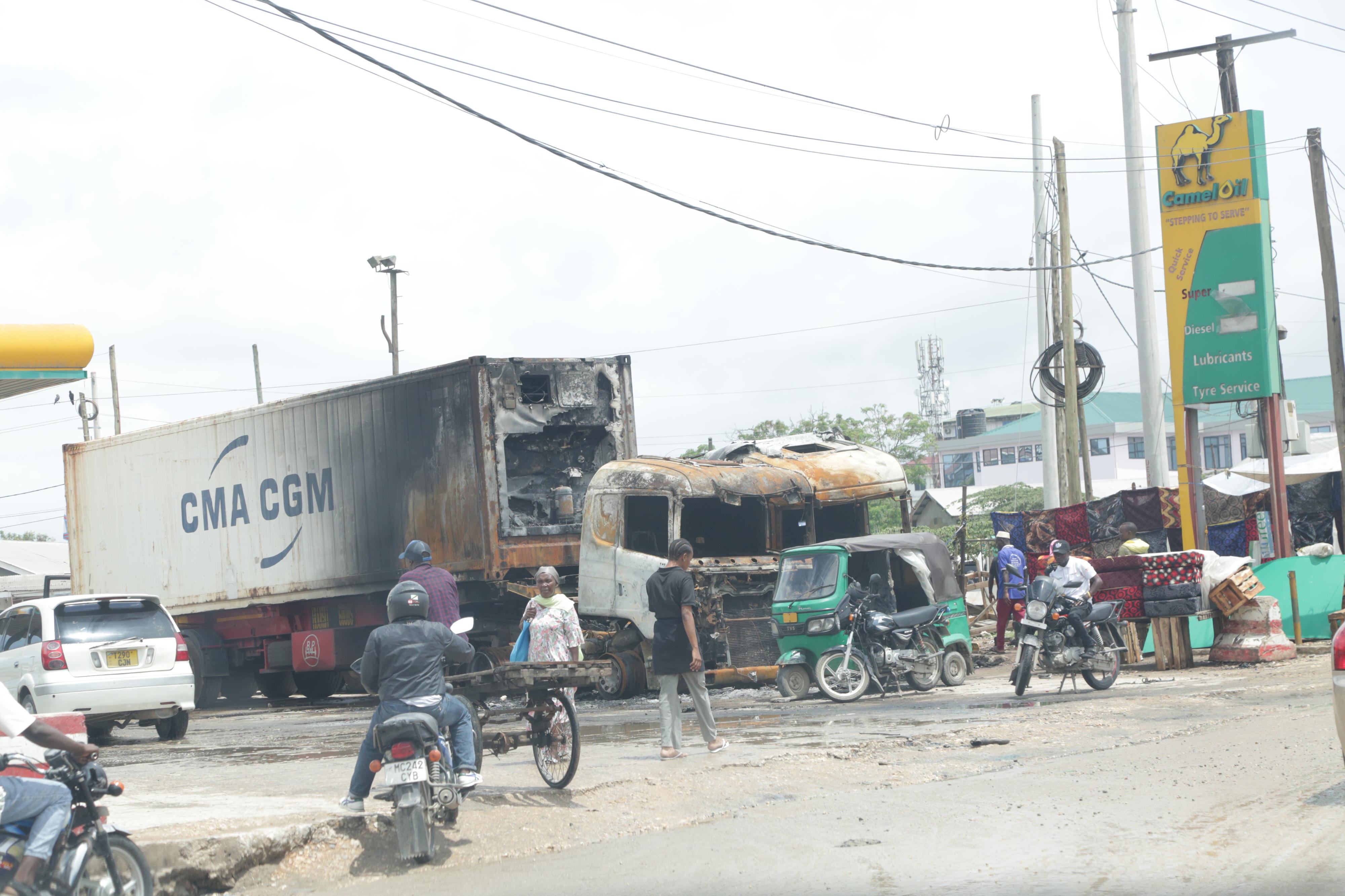Prime
South Africa’s power crisis deepens, causing water shortages as heatwave bites

Supporters of Economic Freedom Fighter party march in Johannesburg on February 28, 2020, during a protest against the embattled South African power utility Eskom.
South Africa’s electricity crisis has deepened further as yet more power units failed overnight, triggering not only intensifying outages “indefinitely”, but also ‘water-shedding’ in the administrative capital of Pretoria, amid a fierce and unseasonal heatwave gripping the centre of the country.
Eskom, the state-owned power producer responsible for supplying over 90 percent of the country’s electricity needs, said early Wednesday (5/10) that three more units had gone down overnight.
The latest technical failures in Eskom’s aged coal-fired power stations triggered ‘Stage 4’ load-shedding as managers of the capacity-limited national grid struggled to maintain its integrity and avoid a system collapse, from which it would take “days to weeks” to recover.
Cumulative effects
The cumulative effects of weeks-on-end of intensive and intensifying outages are having an increasing number of knock-on effects, one of which is the announcement by authorities in Pretoria that citizens were to immediately be put on ‘Stage 2’ water-shedding.
The problem for the city is not a lack of water in its supply, but getting that water into pump storage and reservoir systems from which the city directly draws.
The ongoing outages have meant that there have not been enough ‘powered pump hours’ to recharge the city’s immediate water sources, with some areas experiencing further supply problems due to a lack of power, including that needed to pump water to taps.
Overall, the region has about 66 percent capacity in its Vaal River and Dam supply system – better than average for this time of the year, prior to the ‘normal’ summer rainy season, due to some heavy and unseasonal winter rainfall.
But the central part of South Africa has also been plunged by climate change into another unseasonal heat wave, the second during the southern hemisphere winter, this one coming on suddenly and so fiercely that authorities are warning citizens to stay out of direct sunshine and take other steps to offset the intense heat.
With three more large power units out due to maintenance-related failures, the country is limping along at an average of 4-6GW shortage relative to demand.
The extreme heat gripping the South African heartland has added to the power supply shortage due to much-increased demand from air conditioning units, industrial, commercial and domestic.
More worrying to the average person, and all businesses, is that Eskom said the new, more intensified outage regime would persist “indefinitely”.
Another knock-on effect of the critical power shortage is that the country’s internet and communications backbone has also been stressed, and is often almost completely unreliable for what had become routine uses, such as zoom meetings.
Not all but many parts of the country still reliant largely on Telkom, the government-owned ITC supplier, have much-reduced bandwidth with each outage and, over time, decreasingly reliable connectivity.
In part, this problem stems from the lack of adequate charge-time for batteries operating as back-up at South Africa’s many thousands of cell towers during Eskom outages.
But the issue has been exacerbated by ongoing thefts of lithium-ion batteries from such stations, with an active black-market trade into other parts of Africa.
Many stations were specifically targetted during the ‘failed insurrection’ in KwaZulu-Natal province in July 2021 after the jailing of former president Jacob Zuma, not all yet repaired.
With over 95 percent mobile ‘penetration’, most South Africans, even in many rural areas, are reliant on cellular communications and internet connectivity, both for private and business purposes.
The deepening power and related crises are, at the least, “not good”, either as an indicator that the country’s teetering power grid is being stabilised, or for businesses, with economists forecasting dire economic impacts.
Already, before the latest bout of deteriorating supply, the cumulative cost of the outages was approaching US$500m daily.
According to new research from the Council for Scientific and Industrial Research (CSIR), the total economic impact of load-shedding in S.Africa in the 10 years to 2019 comes in at about $19 billion.
In 2019 alone, there were significant impacts on the economy, the estimated cost being between $3.4b and $6.8b for that year alone.
The power-crunch has become a major barrier to income generation, economic growth and development, according to government assessment.
The power cuts reduced 2021 GDP growth by three percentage points and cost the country an estimated 350,000 potential jobs.





